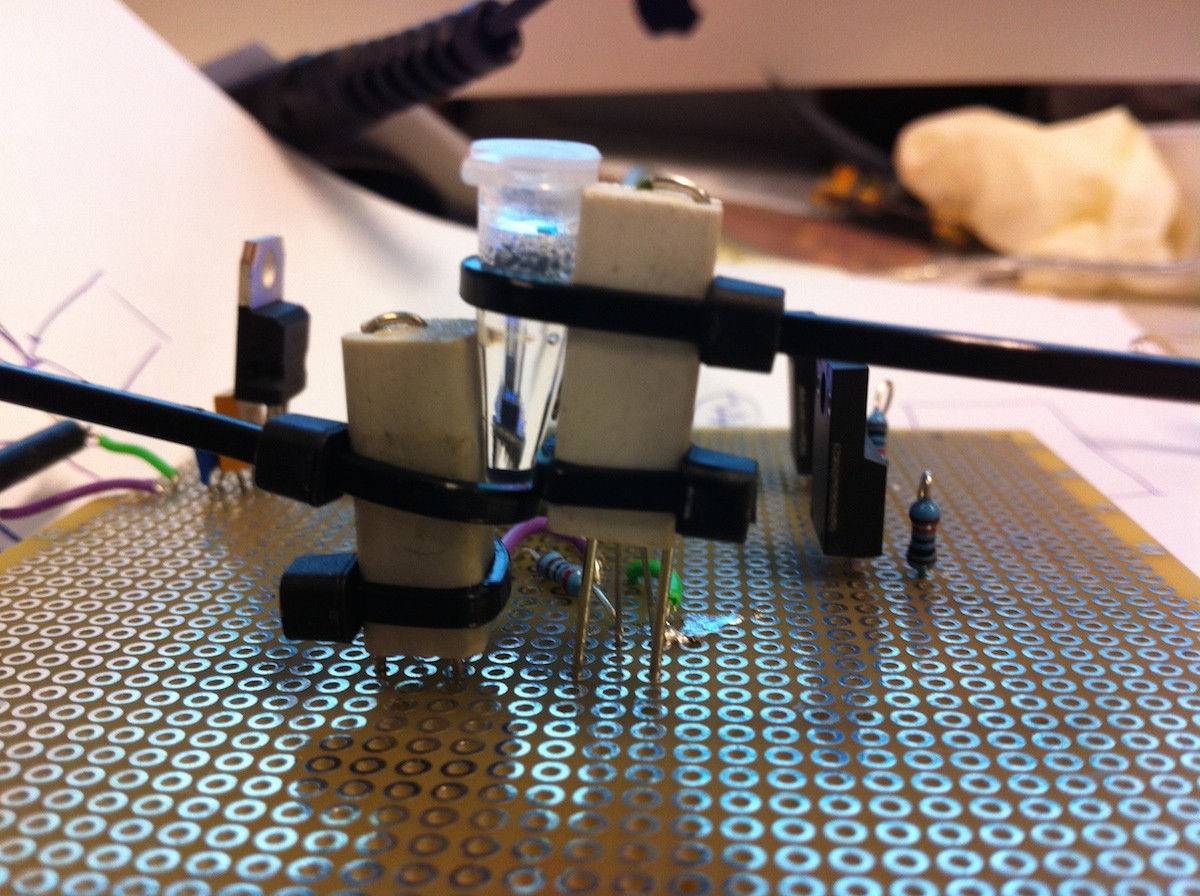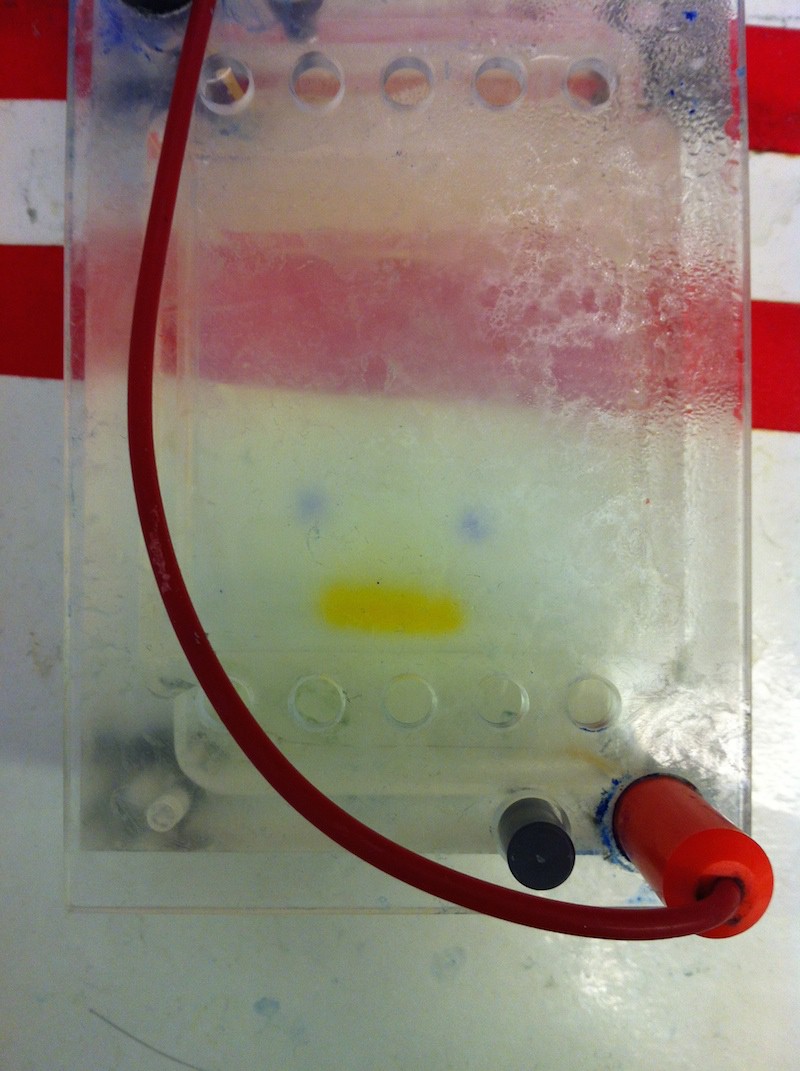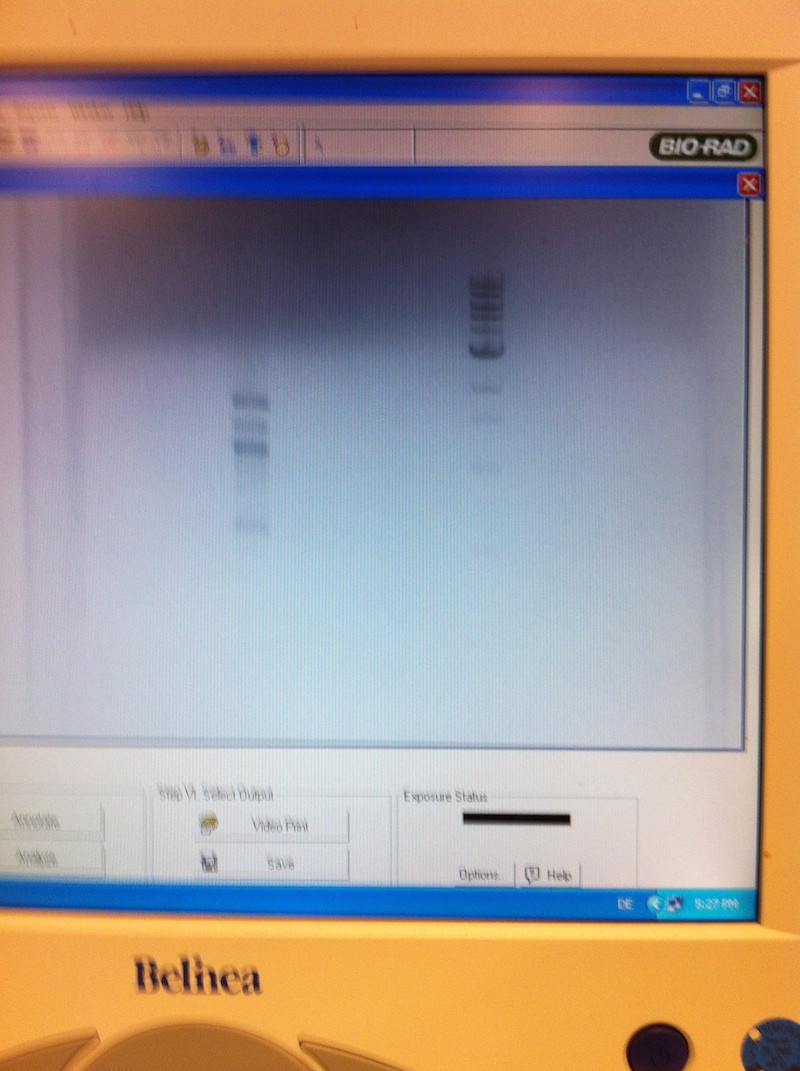The first iteration of the PCR machine is finished. However, I've had negative results from the simplest formulation of the device.
The machine is comprised of 2x PID controlled heating elements, that generate a circular convection pattern in the 250 microlitre reaction tube. I used Herculase II polymerase in a 200 microlitre reaction, with primers designed to amplify out a 615 base-pair long gene. The target was the cAMP receptor protein, with primes of about 20 and 21 bp's and an annealing temperature of ~58C.
The v0.1 prototype uses perfboard and 10 ohm 4W resistors as a heating source. Although I used PID software, the low thermal mass of the heating element meant that Proportional control alone was enough for good temperature stability with no overshoot.
The lower heating element was set to 95C, and the upper to 50C for annealing. The 10 ohm The reaction was made for one hour, with samples taken every 15 minutes to measure the progression of the reaction. Sample were 5 microlitres, and were replaced with PCR mixture (without polymerase, as it digests primers at room temperature).
The 4 samples were loaded into an agarose gel for electrophoresis:
The ethidium bromide dye was used to visualise the DNA, and I used a 100 base-pair and 1000 base-pair ladder to judge the size of the PCR product.
The imaged gel shows the two measurement ladders, 100bp and 1k bp's on the left and right side respectively, but no product bands. This means that the PCR reaction did not happen. I have repeated the reaction a few times, with varying annealing temperatures, but haven't yet seen product bands with the v0.1 prototype.
 David
David



Discussions
Become a Hackaday.io Member
Create an account to leave a comment. Already have an account? Log In.